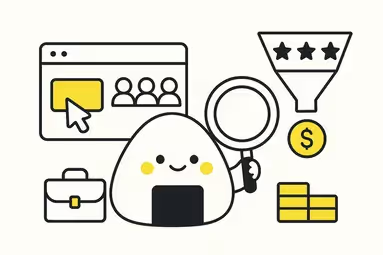.webp)
The Art of Product Leadership: Building Empowered Product Teams
Effective product leadership is defined by two key skills: building high-performing product teams and creating a strong product culture. Our guide shows you how.

Product Leadership Isn't a Title. It's About the Team.
Let's be honest. The product world is obsessed with the stuff—the perfect roadmap, the bulletproof strategy, the pixel-perfect feature that launches to thunderous applause. We celebrate product leaders who ship fast and think big.
But after years of working in the trenches, leading both startups and scale-ups, we’ve learned that all of that comes second. The single biggest predictor of a product's success isn't the quality of its roadmap; it's the health of the product team.
True product leadership isn't about having all the answers or being the smartest person in the room. It’s about building the kind of environment where your team can discover the answers together. If you want to become a great product leader, don’t act like a general, act like a gardener. They know that to create a strong product culture, you have to foster trust, not control. They build high-performing product teams.
The most successful products don’t come from perfect plans: they come from strong product teams led by people who know how to build empowered teams. So, how do you actually do that? It comes down to a few things we've learned (often the hard way) about what really matters.
Mentorship: Building an Empowered Product Team
Forget the idea of the leader as the lone visionary. That doesn't scale, and frankly, it's exhausting.
If your goal is to build a high-performing product team, the best thing you can do is make the people around you smarter. That’s the foundation if you want to create a strong product culture—one built on learning, curiosity, and shared ownership. In other words: mentorship.
This isn't some formal, HR-mandated program. It's a mindset.
- Let them drive. Seriously. The fastest way to kill motivation is to hand someone a "development plan." A real leader asks questions: "What are you curious about? Where do you feel stuck? What do you want to get better at?" Let them own their journey. If you’re aiming to become a great product leader, your role isn’t to have all the answers—your role is to support, challenge, and steer when needed.
- Give feedback that actually helps. We all know the difference between a vague "good job" and a soul-crushing critique. The useful stuff is in the middle: kind, specific, and actionable. Connect it to their work. Instead of creating extra "homework," help them apply new skills to the project that's already on their plate.
- Be a connector. You don't have all the answers. The most powerful words a leader can say are, "I don't know, but I know who does." Connecting a team member with another expert on the team is a massive unlock. It creates an atmosphere of knowledge, and resilience which are all key ingredients in nurturing truly empowered teams.
Building Trust to Strengthen Your Product Team Culture
Okay, so you're sharing knowledge. What’s next? Trust.
Culture isn’t built through all-hands decks or team offsites. It’s built in the everyday interactions, especially 1:1s. These conversations are the heartbeat of any healthy product team (we're very proud of ours, by the way).
And let's be clear: the 1:1 is not for you. It is not a status update. It is sacred time for your team member. It's their time to vent, to dream, to ask for help, to be human. Your job is to show up, shut up, and listen.
- Ask better questions. Move beyond "What's the status of project X?" Try these:
- "How are you, really?"
- "What's taking up most of your brainspace this week?"
- "Is there anything you're dreading on your to-do list?"
- "What could I be doing better to support you?"
- Embrace the silence. When you ask a tough question, don't rush to fill the silence. Let it hang. That's where the real thoughts are.
- Create psychological safety. If team members think their words will be used against them, they’ll stop sharing. Prove—over time—that they can trust you with honesty.
This is non-negotiable for remote teams. You don't have the luxury of grabbing coffee or catching up in the hallway. These conversations are the hallway. They are how you build real connection and manage a remote product team effectively.
Finally, Treat Your Team Like Humans, Not Resources
The best product teams are made up of brilliant humans, not productivity machines. And yet, it’s easy to miss the warning signs of burnout.
You see it in subtle ways. Cameras off. Less energy in meetings. Delays or second-guessing. The product work might still be getting done, but something feels… off.
- Be a smoke detector. Listen in your 1:1s. When someone says they're feeling drained or overwhelmed for a couple of weeks in a row, that's not just a bad week. That's a pattern. It's a signal flare. Don't ignore it.
- Focus on outcomes, not activity. Who cares if someone is online late at night? The real question is: are they delivering great work without sacrificing their well-being? A culture of "presenteeism" is the fastest path to burnout. Burnout doesn’t always look dramatic—it often looks like quiet resignation.
- Offer an off-ramp. When you see someone struggling, step in. Don't wait for them to ask. Say the words: "I'm worried you're taking on too much. Let's look at your plate and see what we can move." Maybe it's shifting an internal initiative or just giving them permission to log off. This proves you have their back. A strong product culture values sustainability over constant hustle.
As thought leaders like Marty Cagan remind us, empowered teams aren’t just well-resourced—they’re well-rested and well-supported. Innovation requires safety. Burnout kills that.
It’s a Choice
Look, the title of "Product Leader" doesn't mean much on its own. It's a role you have to earn every single day through your actions. If you want to know how to become a great product leader, it’s not about doing more. It’s about doing the right things to create a strong product culture.
You can spend your time perfecting your roadmap and arguing about feature priority, or you can spend your time building a building a high-performing product team which is resilient, trusting, and brilliant. One of those things scales. The other doesn't.
Product leadership is a choice. So is building a great team, shaping a resilient culture, and making room for honest conversations. At the end of the day, this is what will set you apart if you want to become a great product leader—not your title, but the trust, culture, and clarity you build around you.
If you're in need of one - let's talk.
FAQ
Product leadership is less about holding a title and more about guiding and empowering your product teams to solve problems together. It’s about fostering a strong product culture where everyone feels trusted and motivated to contribute.
Start by creating an environment where team members feel safe to share ideas and take ownership. Encourage mentorship, open communication, and provide support, especially when managing remote product teams. Trust and psychological safety are key.
Building trust through consistent 1:1s, fostering open dialogue, and setting clear goals help maintain alignment. Remote work requires intentional efforts to maintain culture, so leveraging tools and scheduling regular check-ins is crucial.
Read More Posts
.webp)
PRFAQ: Write a PR-FAQ With a Simple Template That Works
.webp)
WSJF: Prioritize Features with Weighted Shortest Job
.webp)
Product Requirements Document: A Practical PRD Guide
.webp)
Acceptance Criteria: Write Clear Requirements Fast

Product-Led Growth: Is It Right for Your Company?



